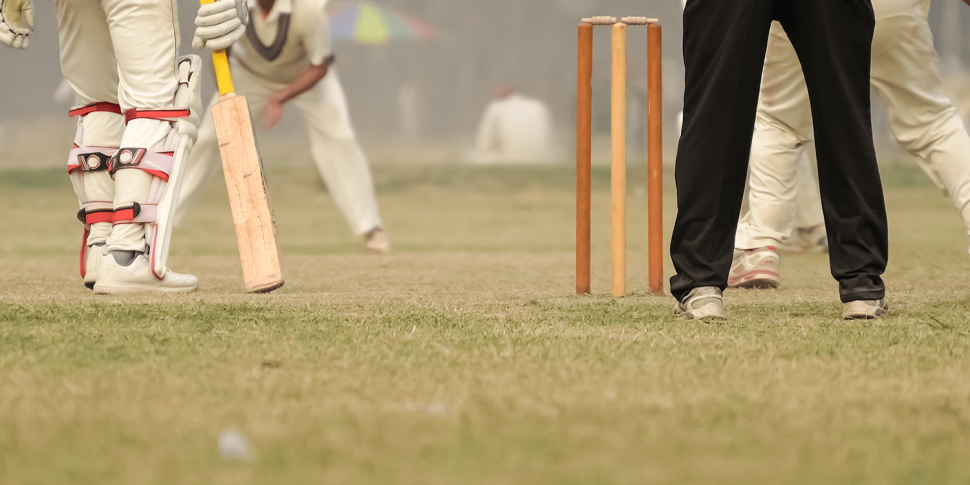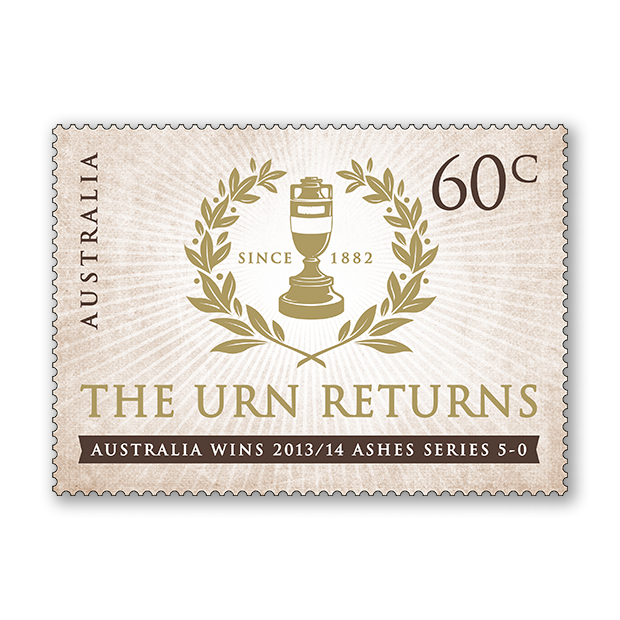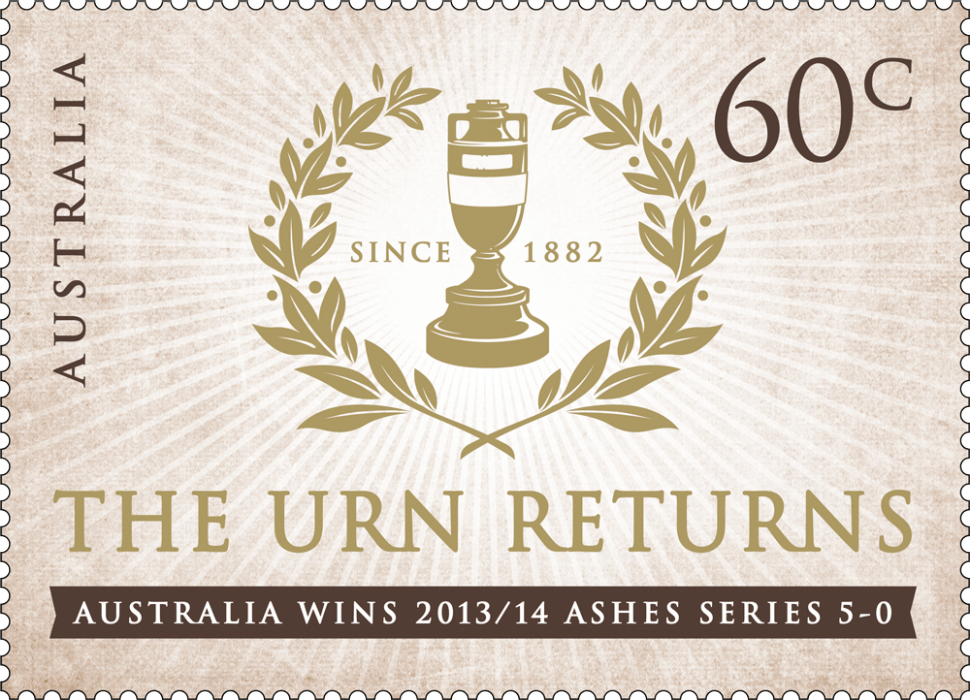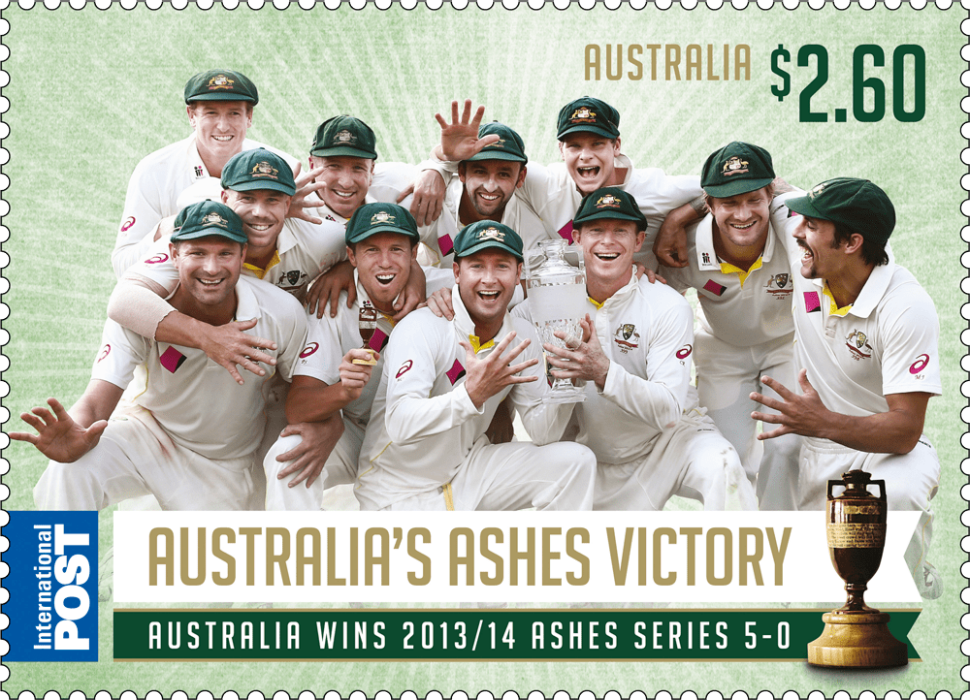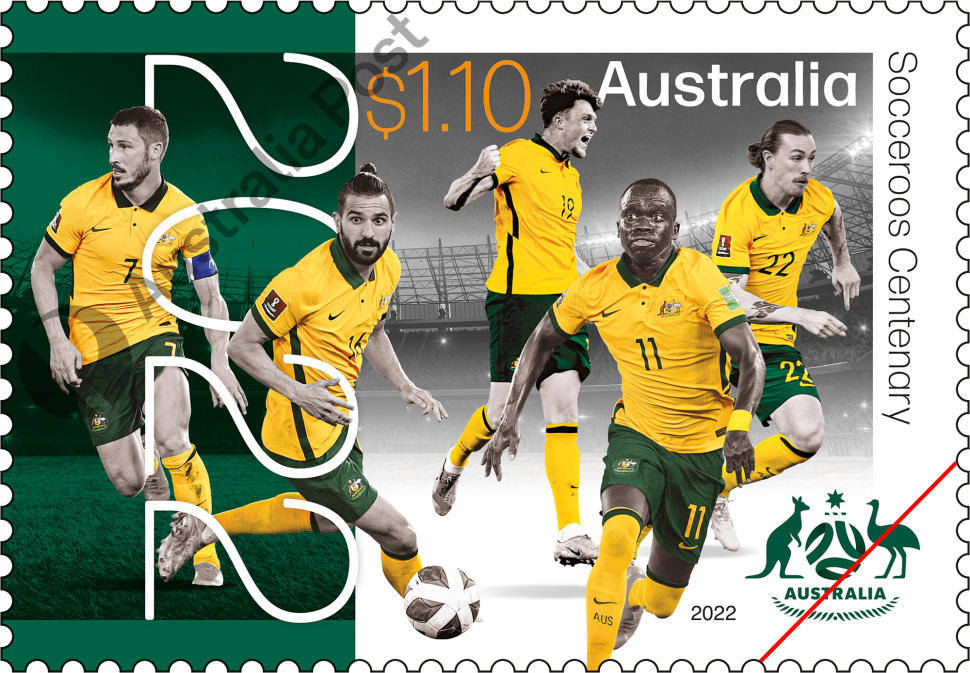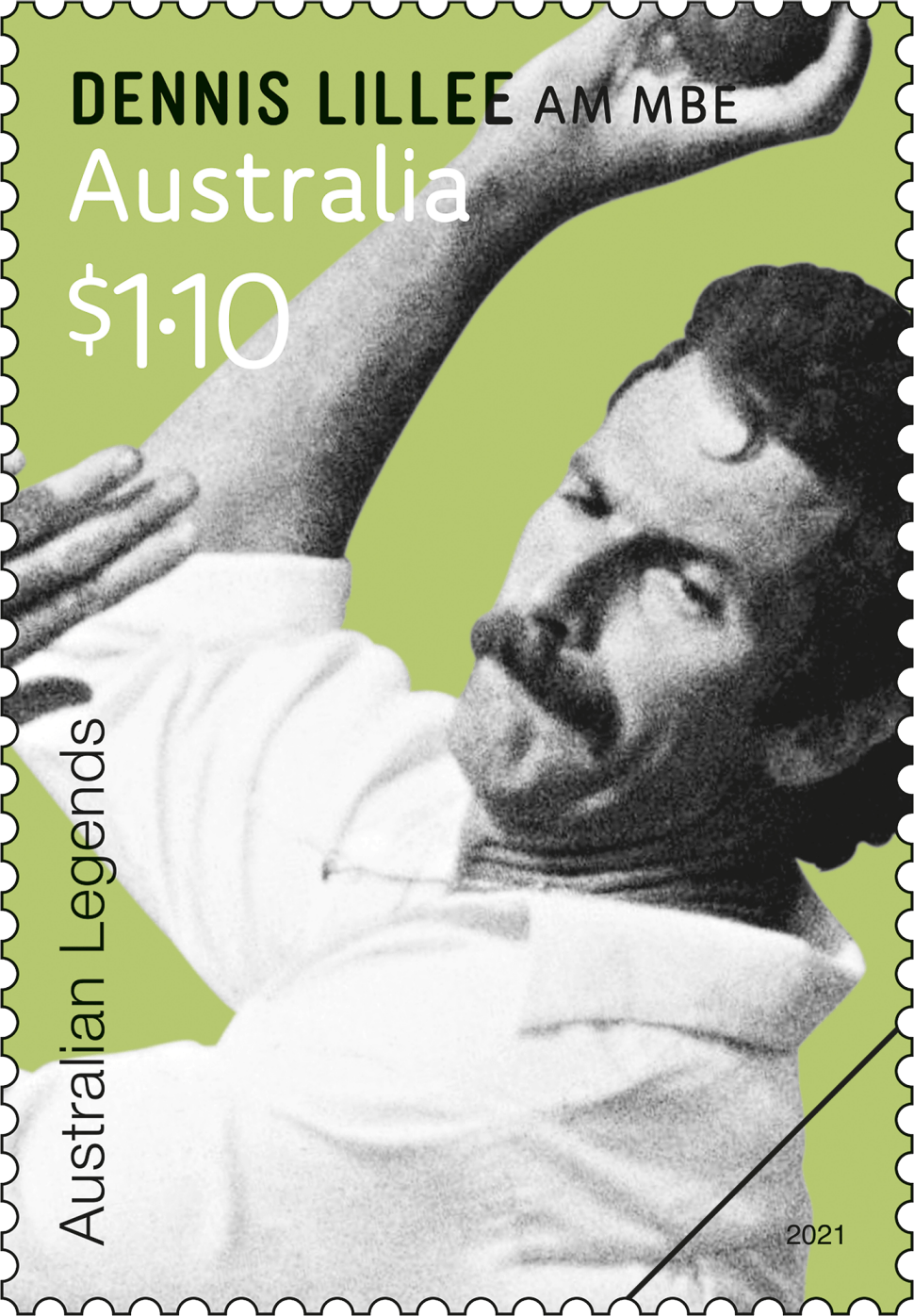The legend of the Ashes was born in August 1882. In an historic match between the English and visiting Australians – in a game with extraordinary turns of fate – Australia beat the home side at the Oval in a match that looked unlosable for the English. By week’s end, the Sporting News had published a satirical obituary, penned by Reginald Shirley Watkinshaw Brooks, claiming that English cricket was dead and that its body would be cremated and the ashes taken to the distant homeland of the victorious.
The funereal symbolism deepened when the English visited the colonies some months later in an effort to regain the ashes. Under Ivo Bligh, the English did indeed take out the Test series, winning the first and fourth matches. But it was the revelry of a group of Melbourne women during the tour that realised the metaphor behind the challenge. After a friendly Christmas match at Sunbury won by the visiting English, the women presented Bligh with a small terracotta urn. This was apparently filled with the charred remains of either the bails or ball from the game in which they’d triumphed. Bligh returned to England with the small urn of ashes – also with a promise of marriage from Florence Morphy, one of the women responsible for the urn.
Two years after her husband died in 1927, Dame Florence Bligh presented the ashes to the Marlyebone Cricket Club (MCC), England’s premier cricket club. The fragile urn is kept permanently in the collection of MCC museum; since the 1998–99 series, a Waterford crystal trophy has been presented to the winner of the Ashes series. Over the history of the Test match series, England has won the Ashes 31 times and Australia’s recent victory sees it inching ahead with 32 wins. The series has been drawn five times.
In 2013/14, Australia made a clean sweep, finishing the series 5–0 at the Sydney Cricket Ground. Over the five Test matches, the scores were:
FIRST TEST 21–24 November 2013 at the GABBA
Australia 295 (97.1) & 7/401 (94.0) (dec)
England 136 (52.4) & 179 (81.1)
Australia won by 381 runs
SECOND TEST 5–9 December 2013 at the Adelaide Oval
Australia 570 (158.0) (Dec.) & 3/132 (39.0) (dec)
England 172 (68.2) & 312 (101.4)
Australia won by 218 runs
THIRD TEST 13–17 December 2013 at the WACA
Australia 385 (103.3) & 6/369 (87.0) (dec)
England 251 (88.0) & 353 (103.2)
Australia won by 150 runs
FOURTH TEST 26–29 December 2013 at the MCG
Australia 204 (82.2) & 2/231 (51.5)
England 255 (100.0) & 179 (61.0)
Australia won by 8 wickets
FIFTH TEST 3–5 January 2014 at the SCG
Australia 326 (76) & 276 (61.3)
England 155 (58.5) & 166 (31.4)
Australia won by 281 runs
Designer
SE Products is a Melbourne-based sporting and entertainment merchandise-development company. This is the first stamp issue that it has designed for Australia Post.
Products released in this issue
- Stamp pack
- Special stamp pack (two sheets of 10 x 60c stamp and facsimile of original obituary)
- Minisheet
- First day cover
- Maxicard set
- Sheetlet of 5 x $2.60 stamp
- PNC
Technical specifications
- Issue date
- 20 January 2014
- Issue withdrawal date
- 31 July 2014
- Denominations
- 1 x 60c, 1 x $2.60
- Stamp design
- SE Products
- Product design
- SE Products
- Paper - gummed
- Tullis Russell
- Printer - gummed
- McKellar Renown
- Paper self-adhesive
- B100
- Printer self-adhesive
- McKellar Renown
- Printing process
- Lithography
- Stamp size
- 52mm x 37.5mm
- Sheetlet size
- Minisheet size
- 170mm x 80mm
- Perforations
- 14.6 x 13.86
- Sheet layout
- Module of 50 (design in gutter)
- FDI postmark
- Sydney, NSW 2000
- FDI withdrawal date
- 30 April 2014
This content was produced at the time of the stamp issue release date and will not be updated.
